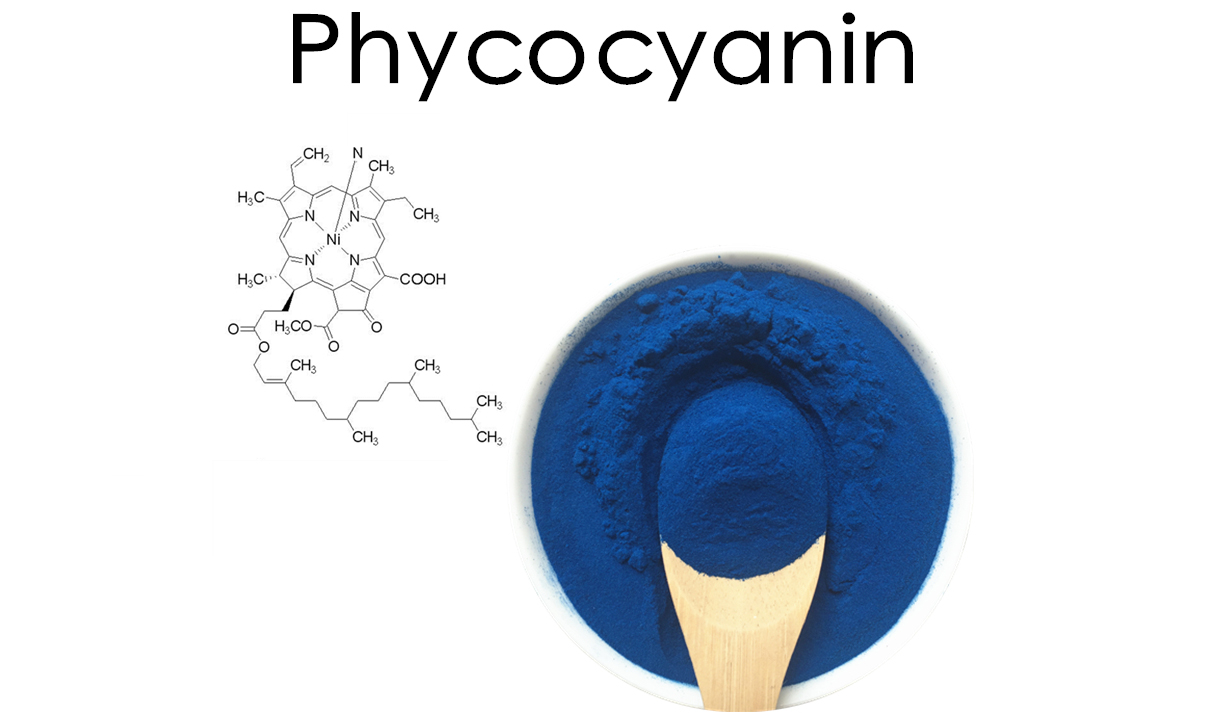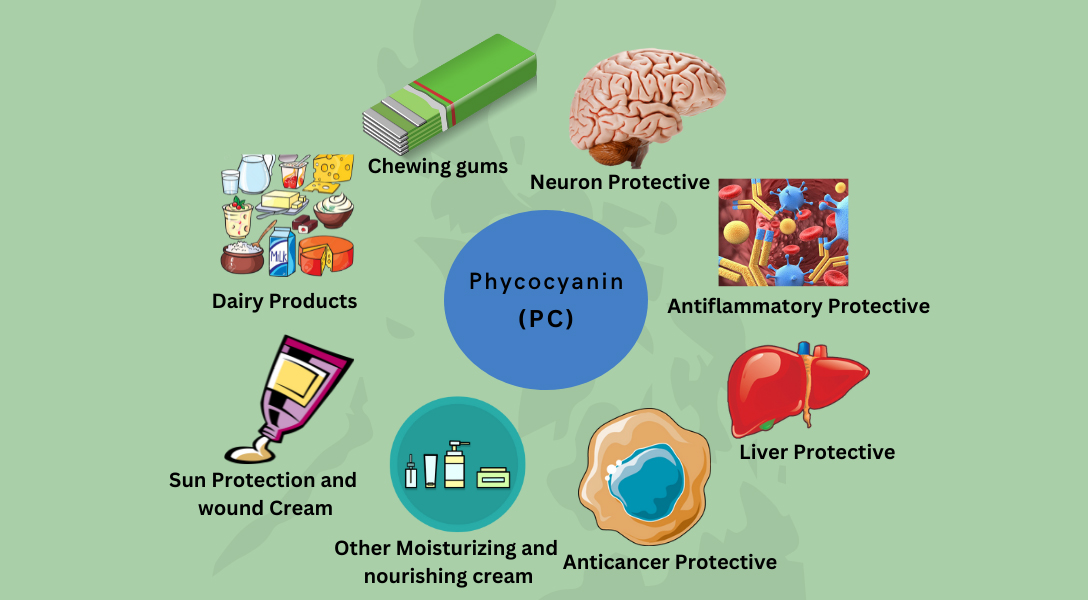Phycocyanin is a blue pigment found in cyanobacteria (like Spirulina) and some algae species. It has various applications, including as a natural colorant and in biotechnological and pharmaceutical fields. The extraction process for phycocyanin involves several key steps to obtain high purity and yield. Here is a general procedure:
1. Harvesting the Algae or Cyanobacteria
Cultivation: Phycocyanin is usually extracted from algae like Spirulina, Arthrospira, or other cyanobacteria that are grown in controlled environments.
Harvesting: Once the algae reach the desired biomass, they are collected using methods like centrifugation or filtration to separate the cells from the growth medium.
2. Cell Disruption
The cells need to be broken open to release the phycocyanin. Several methods can be used:
Mechanical methods:
- Homogenization (high pressure or bead mills).
- Ultrasonication (using ultrasonic waves to disrupt cell walls).
Chemical methods: Using chemicals like detergents or solvents that break the cell membrane.
Enzymatic digestion: Using specific enzymes (e.g., cellulases) to break down the cell walls.

3. Extraction
After cell disruption, phycocyanin can be extracted into a suitable solvent. Common solvents include:
Buffer solutions (e.g., phosphate buffer or Tris buffer) at specific pH levels to maintain phycocyanin stability.
Water: Phycocyanin is water-soluble, so it can also be directly extracted using water.
Salt solutions: Sometimes, a salt (like NaCl) is added to increase extraction efficiency.
The solution is typically stirred or mixed gently to help the pigment dissolve into the solvent.
4. Purification
The extracted phycocyanin needs to be purified to remove impurities, other pigments, and proteins. Several purification techniques can be applied:
Centrifugation: To remove cellular debris after extraction.
Dialysis: This can help remove small molecular contaminants and exchange buffer.
Chromatographic techniques:
- Ion-exchange chromatography: Phycocyanin can be purified by passing the extract through a resin that binds certain charged particles.
- Gel filtration (size-exclusion chromatography): Helps separate proteins and other molecules based on size.
- Hydrophobic interaction chromatography: Can be used depending on the specific properties of the phycocyanin and contaminants.
5. Concentration and Drying
Once purified, the phycocyanin extract can be concentrated using methods like:
Evaporation or freeze-drying to remove excess solvent and obtain the final concentrated product.
Lyophilization (freeze-drying) is commonly used to maintain the stability and activity of phycocyanin, especially for long-term storage.
6. Characterization
After extraction and purification, the quality of phycocyanin is often assessed using several methods:
UV-Vis spectrophotometry: To measure the concentration and purity of phycocyanin. The absorption maxima typically occur at wavelengths around 620-650 nm.
Protein assays: To quantify the protein content and assess purity.
SDS-PAGE or HPLC (high-performance liquid chromatography) for further analysis of the molecular size and purity of the extracted phycocyanin.

7. Storage
Phycocyanin is sensitive to light, temperature, and pH. It should be stored in dark, cool, and dry conditions, often under refrigeration or in frozen form to prevent degradation.
Notes:
- The extraction efficiency can vary depending on the algae species, the extraction method, and the processing conditions (e.g., temperature, pH, time).
- Some commercial methods use mechanical disruption combined with enzymatic treatments to maximize yield.
By following these steps, you can obtain phycocyanin with high purity, which can be further utilized in various applications like natural food coloring, antioxidants, or biotechnological applications.
